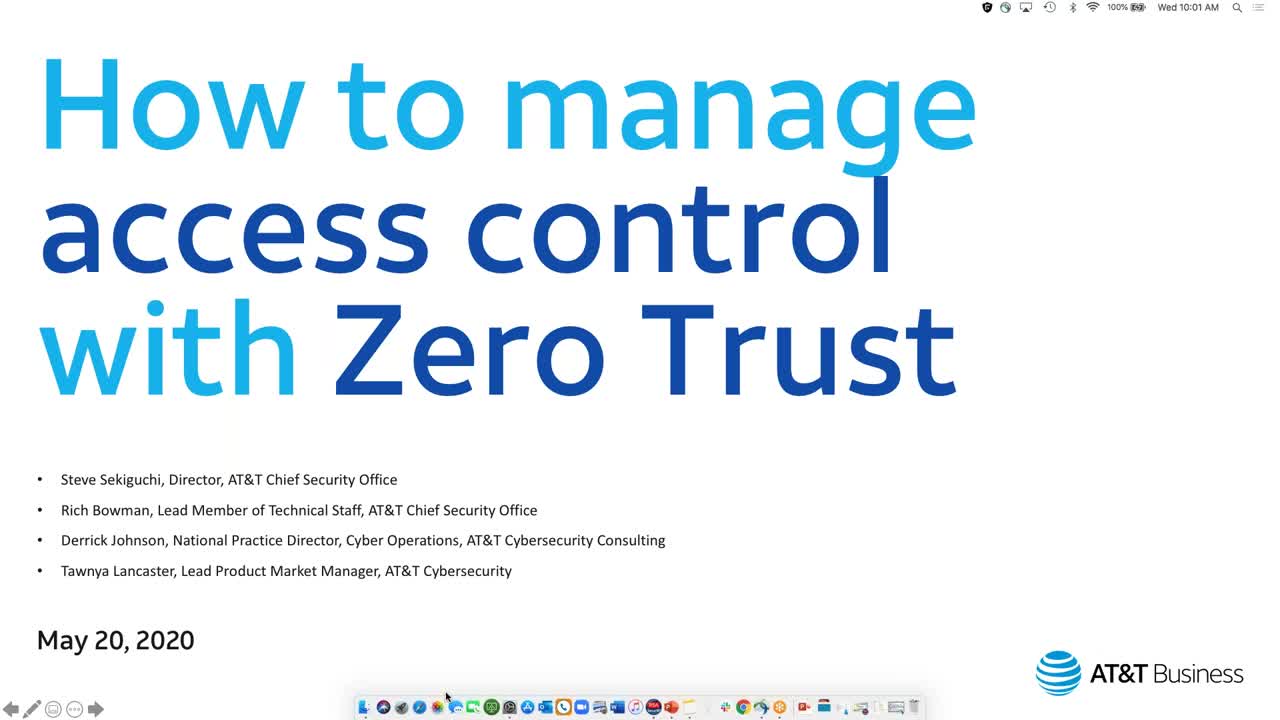Zero Trust architecture
LevelBlue Consulting’s Zero Trust Readiness Assessment is designed for customers who need to evaluate their current state information security program and its maturity in attaining Zero Trust.
Why Zero Trust with LevelBlue?
The foundation of a Zero Trust architecture
As data spreads across multiple locations, cloud vendors, and a variety of endpoint devices, traditional security that has relied on protecting organizations from the perimeter and trusting devices inside the network has become less effective. An organization’s network architecture should evolve to a Zero Trust model to align with this absence of a true perimeter.
New business initiatives and processes have created broader attack surfaces. Applications, users, and devices are moving outside of the traditional corporate zone of control, dissolving what was once the trusted perimeter, and enterprise security and networks must evolve to help protect the business.
Help minimize chances of facing a data breach
Uncover organizational, functional and technological gaps
Develop a strategy and roadmap to achieve desired Zero Trust State
Address the complexity of integrating a Zero Trust model with the existing environment
Webcast
How to manage access control with Zero Trust
Use cases
The impact of Zero Trust architecture
Zero Trust objectives
Zero Trust means different things to different people, but a strategic approach to Zero Trust will first identify what it is that you’re trying to protect: the data. The ultimate goal with Zero Trust is to stop data breaches. Once the data is identified, classified and traffic flows have been enumerated, you can start to see how the access policy fits together. Many organizations have certain aspects of Zero Trust already in place, and by breaking down the organization’s security environment into 6 main pillars, you can begin to see what you can currently utilize in support of Zero Trust and what needs to be supplemented with other tools and techniques.
Zero Trust implementations
The general concept of Zero Trust applied with the above tenets serves as guidance in developing a Zero Trust Architecture (ZTA). The ZTA involves not only implemented and interconnected tools and advanced technologies, but also a set of operational policies and authentication requirements that enforce the Zero Trust principles. A ZTA can be implemented in various ways depending on an organization’s use case, business flows and risk profile. While each approach applies different components and technologies, such as enhanced identity, micro-segmentation and software defined perimeters, any approach should implement all the above tenets.
Features
LevelBlue Cybersecurity Consulting service approach
Users
Authentication and verification of users on an on-going basis.
Network
Network segmentation, isolation, and help to protect data in transit.
Devices
Authentication of a device and its cybersecurity posture.
Analytics
Real-time observation to understand user and device interaction.
Workloads
Development of applications, and access to applications.
Automation
Make dynamic changes to access based on analytics.
How it works
Present state to next generation
The Zero Trust Readiness Assessment provides an understanding of your current maturity in achieving Zero Trust and a list of priorities and milestones that will help achieve a next generation environment.
Discovery
An on-site discovery workshop is conducted to gather information on the current posture of your information security program.
Zero Trust capabilities assessment
Information discovered within each of the 6 pillars is used to analyze the organization’s alignment with the major tenets of Zero Trust.
Maturity assessment
A maturity assessment is conducted on the organizations capabilities within each of the pillars, as well as the overall security program, to understand required changes necessary to align with Zero Trust.
Strategy and roadmap
LevelBlue Cybersecurity Consulting will use the current maturity to develop a strategy and roadmap tailored to your organization that addresses planning, budgeting, prioritization, time management, and implementation of strategic initiatives required to efficiently and effectively help achieve your desired Zero Trust state.
FAQ
Why should I implement Zero Trust architecture?
Implementing a Zero Trust Architecture is important because it removes trust from all network packets and seeks to gain confidence that any data request is legitimate regardless of where the request originated or who or what sent the request.
Does Zero Trust architecture have vulnerabilities?
Zero Trust architecture is not a guarantee that your company will never have a breach, therefore it is important that your organization develop an ongoing incident management or recovery program that fits your needs.
How can Zero Trust help our current remote work environment?
In today’s work from home model you have company data on personal devices, family members with access to corporate data and data being transitioned to the cloud. As the number of remote workers have grown exponentially along with the types of endpoints it is imperative that all devices both internally and externally are questioned. Zero Trust Architecture implements the tools and philosophy that will help ensure that all access points to the network are secure and safe.
How long does it take to implement Zero Trust Architecture?
The answer will depend on the maturity level you want to achieve, your current cyber risk maturity level and your overall strategy. Once your maturity level is achieved, the journey to maintain your Zero Trust Architecture will evolve with your organization to maintain cyber resiliency.
Get a quote
We're here to help! Complete the form and we will be in touch soon.

